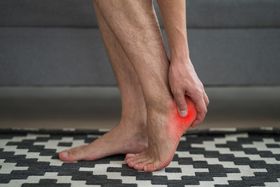Benefits of Cycling Orthotics
Updated December 5, 2024.

Cycling is a very leg-intensive sport that has innumerable advantages like improved cardiovascular health, decreased body fat, improvement of joint mobility, and improvement in the strength of the muscles of the lower body. However, due to the prolonged intensity of the activity, it might put extra strain on the legs without the use of proper footwear.
Can You Cycle Without Cycling Shoes?
Running shoes are generally okay for those who don't spend hours everyday cycling. If cycling makes up a small portion of your day, such as transport to and from school, you don't need to spend the extra money on a pair of specialized cycling shoes.
However, if you are an avid cyclist who spends hours every day (either on the road or in a gym for exercise), then regular running shoes might not be good enough and may result in muscle imbalances and reduced power with every pedal stroke.
Cycling shoes are necessary for individuals riding regularly as they are designed with stiffer soles for generating a more efficient energy transfer while pedaling.
How Can Orthotics Help Cyclists?
All athletes can find some benefits from orthotics. Cycling orthotics, such as cycling shoes for flat feet, are of high value and can offer the following benefits to your performance:
- Improved performance
- Maximizing the efficiency of the pedals
- Increased power/torque in the push phase
- Assistance in addressing the mechanical instability of the feet and angular instability of the legs
- Even force distribution
- Improved shoe fit
Additionally, they can provide the following benefits for pain relief and comfort:
- Reduced foot fatigue
- Cycling arch support
- A customized and comfortable environment inside the footwear leading to an improved shoe fit
- Prevention and relief from foot pain
- Relief from plantar fascial tension
- Better metatarsal padding
Which Orthotics Are Best for Cyclists?
Over-the-counter (OTC) orthotics can be used for cycling in some instances, but it is not recommended.
Regardless of whether you are a professional cyclist or just an average person who cycles regularly, it is essential to get custom-made insoles for cycling shoes due to the frequency of your activity. Cycling insoles are especially recommended and necessary for individuals who have flat feet, excessive foot supination and pronation postures, posterior tibial tendonitis, and plantar fasciitis.
The cycling orthotics from Upstep are highly recommended, both for a regular cyclist and a professional, whether your goal is to enhance sports performance or protect from injuries. Custom cycling shoe insoles will provide a proper fit for the unique specifications of your feet.
Upstep's cycling inserts are designed to fill the spaces created between the foot and shoe by using a unique mold of your feet. They are sure to maximize power output by:
- Improving comfort through a reduced movement of the foot within the shoe.
- Facilitating proper foot function.
- Spreading the load more evenly.
- Maximizing energy return and support.
The best choice would be to go for orthotics made of high-quality CNC materials comprised of copolymerized EVAs and polypropylene that offer ultimate comfort without compromising support and protection.
» Looking to up your game? Upstep's Multi-Sport Custom Orthotics may be the answer
Are Cycling Orthotics Worth It?
Due to the support, comfort, and enhanced performance with protection from future injuries, aches, and pains, cycling orthotics are worth opting for to make your cycling activity enjoyable and faster. Also, it is important to consider the fact that while cycling orthotics have many pros, the only real con is the extra cost you'll have to afford in an already expensive sport.
If you don't identify yourself as an avid cyclist with a vested interest in the hobby or as a professional, then you don't need to spend the extra cost on a pair of cycling orthotics. Although the demand on your legs is prolonged and consistent, there is relatively low impact stress with a similarly low risk of injury, especially for those who use cycling either as a method of transport or a casual hobby.








